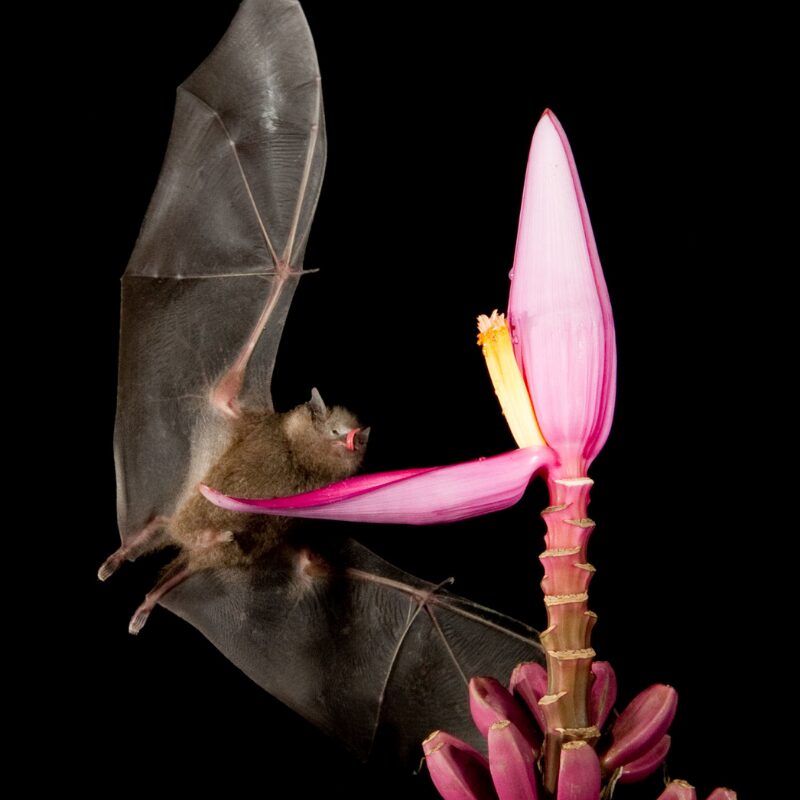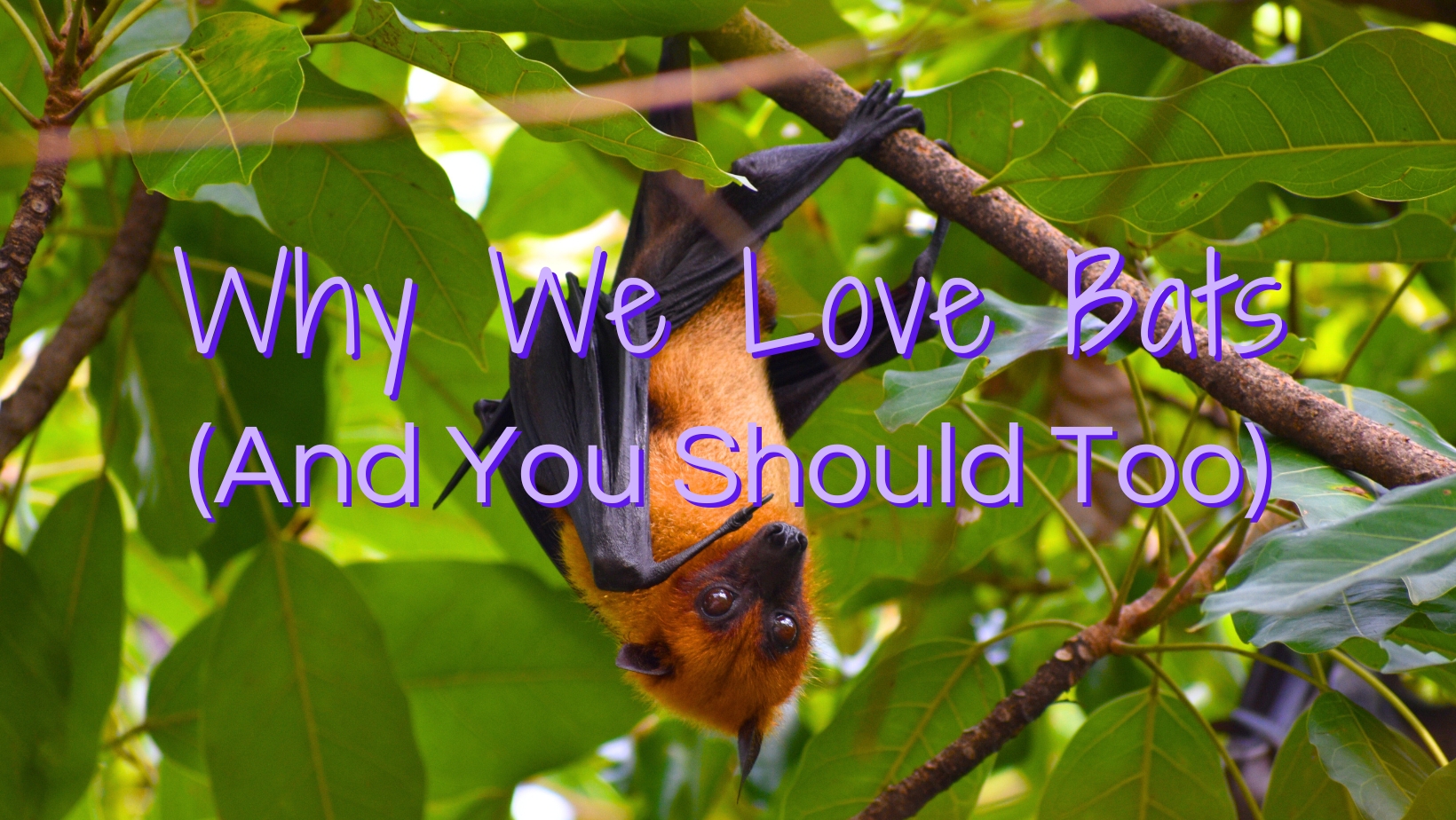Bats are perhaps one of the most misunderstood animals. While their fanged features and association with the Halloween season give them an ominous first impression, these winged creatures are some of our garden’s biggest helpers. Although our flowers are mostly pollinated and fertilized by bees (See our recent blog–Pollinators: The Birds, the Bees, and The Butterflies), bats can be found working the night shift, seeking nectar from flowers, carrying pollen from plant to plant, and eating pesky garden pests.
Bat Basics
Bats fall into one of two categories, Megachiroptera and Microchiroptera. Megachiroptera are known to eat fruit while Microchiroptera (microbats) eat insects. Contrary to popular belief, and popular sayings, bats are not blind. In fact, bats have extremely good vision, which allows them to see and navigate their way through dark conditions. Aside from their vision, Microchiroptera bats use something known as echolocation. This is the process of emitting a sound and waiting for it to bounce off of nearby objects–an echo–in order to gauge distances. 70% of bats use echolocation to make their way around and find prey in the dark.

Why We Need Bats
Maryland is home to 10 species of microbats–The hoary bat, the Eastern red bat, the big brown bat, the Eastern small-footed bat, the little brown bat, the Indiana bat, the tri-colored bat, the northern long-eared bat, the silver-haired bat, and the evening bat. As opposed to Megachiroptera, which feast primarily on fruit, microbats are known to take care of moths, mosquitoes, crickets, beetles, and even stink bugs! It’s said that bats help save the United States over 3 billion dollars in pest control. For this reason, bats are not only successful in pollinating flowers, but also in ridding our gardens of insects that like to eat our plants.
Unfortunately, all ten bats are among the native animals listed under Species of Greatest Conservation Need in Maryland, which means we need to be doing our part to preserve these nocturnal creatures. Of course, many people get rid of bats when these animals seek shelter in our homes. While we understand the need for bat removal, there are ways to ensure they have their own place to live without taking up space in our homes!
 Bat In A Tree
Bat In A Tree
How to Build a Bat House
Building a bat house is one of many things we can do to ensure the safety and survival of these beloved pollinators. Bat houses are specifically built so that predators cannot gain access and so that many bats can inhabit the space at a single time. Here at Patuxent Nursery, we stock up on bat houses in the spring, as bats are typically found using these houses in the summertime. While you can of course buy a bat house that is already made, making one yourself is easy to do, and, with adult supervision, a fun halloween-time activity!
Here are some things you might need if you decide to make one: plywood, mesh netting (Once inside the house, bats will need something to hang their nails on. Including a mesh netting along the inside of your bat house will ensure they have something to hang off of while they sleep during the day), glue, staple gun, drill, screws, and a saw.


Things to Consider When Building a Bat House:
- Keep in mind that bats love warmth, so placing your bat house in a higher spot that receives lots of sun will ensure bats decide to roost in their new home and not your own.
- Bats also prefer to live near a source of water, so if you have a nearby stream or river, you might consider putting your bat house closer to it.
- Make sure to hang the house where any bat droppings won’t be a nuisance.
- There are many different styles of bat houses (see images). One of the most important things to include in the construction of your bat house is a predator block. By creating a flatter design, or by blocking off part of the entry points so that only bats fit, you ensure predators like large birds or even raccoons cannot find their way inside.
Don’t let bats spook you! While we’re fast asleep in the comfort of our homes, bats are working their magic, eating the pests that invade our gardens and pollinating our plants. By educating others on the importance of bats, planting native, and even building sanctuaries for them, we can help protect these amazing animals.
If you happen to build your own bat house, show us your work by tagging us on Facebook or Instagram. We’d love to see if it gets any new winged residents by summertime!


Leave a Comment
You must be logged in to post a comment.